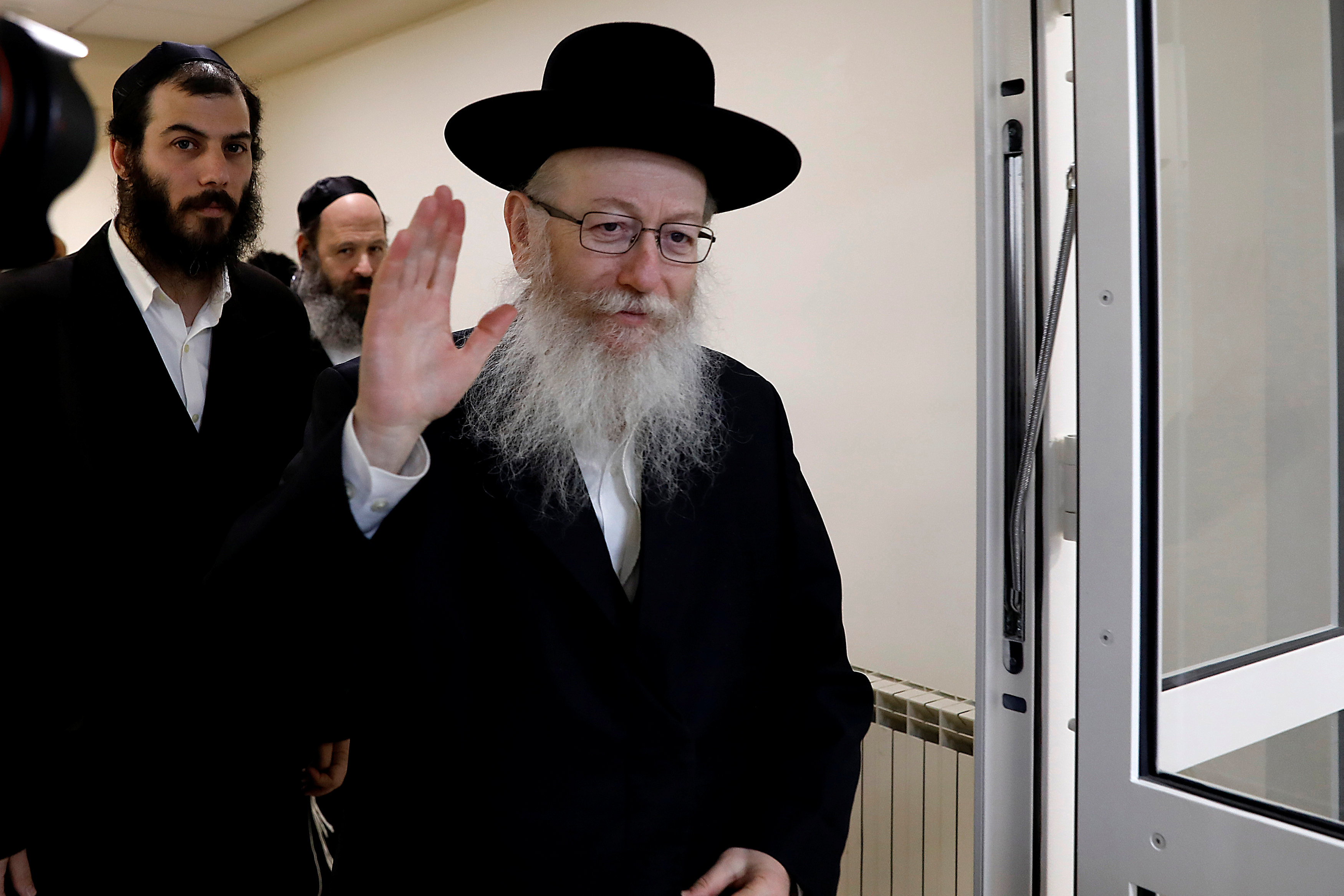 Israel Health Minister Yakov Litzman, a rabbi from the United Torah Judaism party, waves to journalists after handing in his resignation to Prime Minister Benjamin Netanyahu, during the weekly cabinet meeting in Jerusalem November 26, 2017. REUTERS/Gali Tibbon/Pool
Israel Health Minister Yakov Litzman, a rabbi from the United Torah Judaism party, waves to journalists after handing in his resignation to Prime Minister Benjamin Netanyahu, during the weekly cabinet meeting in Jerusalem November 26, 2017. REUTERS/Gali Tibbon/Pool We call this format a Timesaver Guide to Israel’s Coming Elections. This will be a usual feature on Rosner’s Domain until next Election Day, September 17. We hope to make it short, factual, devoid of election hype, and of he-said-she-said no news, unimportant inside baseball gossip.
Bottom Line
Stalemate.
Main News
Peretz elected as Labor leader.
Ethiopian demonstrations capture the headlines.
Polls: Clear advantage for Netanyahu over his rivals as “most fit to be PM”.
Barak proposes to drop the issue of Haredi draft. Names his party Democratic Israel.
Talks about mergers of right parties and left parties continue without result.
Developments to Watch
Barak: His new party was launched with media fanfare, but the polls do not give it much beyond the electoral threshold (and in one case, below). If the party does not gain momentum, it might fail to convince Labor and Meretz to form a bloc under its wings.
Lieberman: His party gained a few seats, but not many, since his decision not to join a Netanyahu coalition. But for now, he has all the seats he needs to serve as the ultimate king maker of the next election. Without him, no bloc has a majority.
Likud, Blue and White: Both leading parties are losing votes, according to the polls.
The Blocs and Their Meaning
As you can see in the graph, the two blocs, one of parties for Netanyahu and one of parties against him, are both stuck bellow the 60-seat line. Lieberman will make or break the next coalition. That is, unless Likud and Blue and White decide to form a unity government without him.

And here is a graph of two averages. One is the average, for each party, of the 5 latest polls, and one is a graph of the 10 latest polls. Why such graph is helpful? Because it gives us a way to look at trends. Take a look and note the following things:
The leading parties are in gradual decline.
Labor still has a pulse.
There are still many parties in the 2-5 seat zone – namely, unsecured.

A Party to Watch
For United Torah Judaism, the voters are not the issue. The voters are loyal. This party suffers only is circumstances change, and coalitions are formed without it, or without it having a power to dictate its terms. The polls show that a repetition of its current eight seats is a likely scenario for the September election.
























 More news and opinions than at a Shabbat dinner, right in your inbox.
More news and opinions than at a Shabbat dinner, right in your inbox.